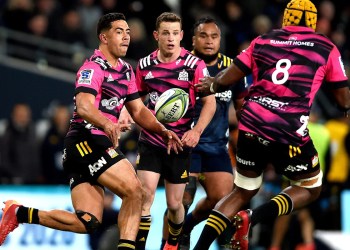Matt Blake reached out to Cleveland Guardians pitcher Shane Bieber with a message of reconciliation over the weekend. During his time in the Cleveland player development system in the 2010s, Blake played a role in helping Bieber go from a college walk-on to winning the unanimous American League Cy Young Award in 2020. At one point, Bieber was seen as a prime example of how a big-league ace could be developed, gaining strength, velocity, and spin on his pitches as he climbed the ranks.
However, when Blake sent his text, Bieber had joined a troubling trend of talented young pitchers who would be sidelined for the season. Just two days after the Miami Marlins announced that 20-year-old phenom Eury Pérez would undergo Tommy John surgery, the Guardians revealed that Bieber, 28, would also need the same procedure. A recent evaluation of 25-year-old Atlanta Braves starter Spencer Strider showed damage to his elbow’s ligament, possibly leading to his second Tommy John surgery. In New York, where Blake now serves as the Yankees pitching coach, the team was without their ace Gerrit Cole until June due to elbow inflammation and had also lost one of their top relievers, Jonathan Loaisiga, to season-ending elbow surgery.
“As a pitching coach trying to manage nine innings of pitching every night over a 162-game season,” Blake commented, “I’m quite concerned.”
Pitching has always been a risky endeavor for players, and there are indications that it’s becoming even more challenging to keep them healthy. The early days of the 2024 season have highlighted the fragility of pitchers. A recent report by The Ringer cited former MLB trainer Stan Conte’s research, which showed a rise in UCL surgeries from 111 in 2011 to 263 in 2023. Of the 166 players on the injured list at the start of the season, as reported by the New York Post, 132 were pitchers. If these trends persist, 2024 could see another significant increase in arm injuries, causing concern throughout the league.
The issue sparked a dispute between Major League Baseball and the MLB Players Association over the weekend. The two sides exchanged press releases about the impact of the pitch clock, introduced in 2023 and further shortened for 2024. MLBPA chief Tony Clark criticized the league’s decision to reduce the time before the 2024 season, calling it “an unprecedented threat to our game.” MLB, on the other hand, referenced unpublished analysis from Johns Hopkins University that found no connection between the introduction of the clock and the surge in injuries.
While the clock was a focal point of contention, The Athletic’s surveys of players, coaches, and managers revealed various other factors contributing to the injury problem. These include the industry’s push for optimization, the emphasis on maximizing velocity and spin, and the use of training methods that advocate year-round, high-intensity workouts. Untangling this complex issue may require extensive research and reevaluation over the coming years.
“Protecting these players’ arms is of utmost importance,” remarked Dodgers manager Dave Roberts. “And clearly, we haven’t figured it out yet.”
The season began with several prominent pitchers sidelined. Clayton Kershaw of the Los Angeles Dodgers had shoulder surgery last October, while Max Scherzer of the Texas Rangers and Jacob deGrom of the New York Mets were recovering from surgeries. Justin Verlander of the Houston Astros experienced shoulder issues during spring training. These cases highlight the challenge of maintaining pitchers’ health, particularly as they age.
Eury Pérez and Sandy Alcántara were once poised to be standout pitchers for the Marlins but are now facing a year of recovery from surgery. (Megan Briggs / Getty Images)
For MLB, the concern extends to a wave of pitchers suffering injuries soon after achieving success. Sandy Alcántara, the 2022 NL Cy Young winner for the Marlins, underwent elbow surgery last season. Shane McClanahan of the Tampa Bay Rays, who started the All-Star Game a year ago, also required surgery. Milwaukee Brewers’ Brandon Woodruff and Kansas City Royals’ Kyle Wright are both missing this season due to surgeries.
“Our sport deserves to have its top pitchers on the mound,” emphasized Detroit Tigers manager A.J. Hinch. “The starting pitcher matchup is a key element of the game, and we want the elite pitchers out there. Unfortunately, more and more are getting sidelined due to injuries.”
MLB has initiated a study to address the issue, involving discussions with 100 individuals across the baseball landscape, including medical experts. Once completed, the league plans to establish a task force and offer recommendations to teams on how to preserve pitchers’ health.
The sport has grappled with this problem for years. In the past, pitchers were thought to be at risk due to overuse, leading to changes in how they were managed. Today’s approach focuses on maximizing a pitcher’s performance from the start, utilizing data to enhance their skills. However, this emphasis on output has not solved the problem of keeping pitchers healthy.
“There’s a physical cost to chasing extreme outcomes like high velocity or unique pitch movement,” Blake noted. “The pursuit of these goals may contribute to the increased risk of injuries.”
Despite ongoing debates over the pitch clock, players, coaches, and managers recognize that multiple factors are at play in the injury crisis, from the pursuit of velocity to the demands of the game. Finding a solution will require a comprehensive approach that addresses all contributing factors.
“While none of these factors are solely to blame,” Blake concluded, “the combination of all of them presents a significant challenge.”
The Athletic’s Fabian Ardaya, Sam Blum, Patrick Mooney, and Cody Stavenhagen contributed to this report.

GO DEEPER
Rosenthal: Pitching injury crisis has no easy fix, but baseball’s leaders better get to work on one
(Top photo of Strider: Justin K. Aller / Getty Images)








